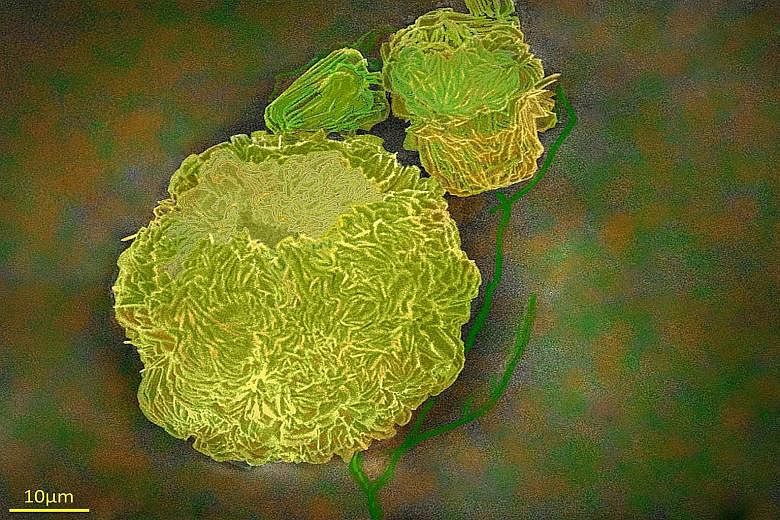The structure in this image may be known as a King's Pleasure Chrysanthemum, but it has nothing to do with a plant. It is actually an electron microscope image of two-dimensional (2D) carbon sheets, also known as graphene oxide, at 1,200 times magnification.
These graphene oxide sheets are only 0.7 nanometres thick - more than three times smaller than the diameter of human DNA. These sheets can arrange themselves into different shapes under different aqueous environments.
Here, they have taken the shape of a King's Pleasure Chrysanthemum - a flower native to East Asia and North-eastern Europe. Electrons flowing through conventional 3D materials can flow through the x-, y- and z-axis. In 2D materials, however, the electrons flowing through are confined to the x- and y-axis.
As a result, there are more active sites for extra electrochemical reactions. Research in the field has potential application in sensing, green energy, environmental remediation and data storage, among others.
It is being studied by researchers from the Nanyang Technological University, in collaboration with scientists from the Hebrew University of Jerusalem and the Ben-Gurion University of the Negev in Israel, under the Nanomaterials for Energy and Water Management programme in carbon nanomaterials.

